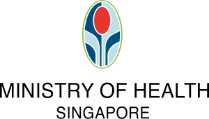How to watch what you eat

Published on
01 Oct 2016
Published by
The Straits Times
More people are checking the labels on their food products to find out what goes into their food. But as the labels can be tricky and confusing, many forgo reading them, especially during a busy supermarket dash.
How many of us regularly read the nutrition information on food labels when we buy food products and how much do we understand? Food labels can be confusing and tricky and we may forgo perusing them when making a busy supermarket dash.
But more people are becoming interested in food labels for health reasons. They want to know what they are eating and how much sugar, salt and other ingredients go into the products they buy.
Associate Professor Lim Bee Gim, programme director of chemical engineering and food technology at the Singapore Institute of Technology, tells Mind&Body editor Ng Wan Ching how to decipher food labels.
Q) How do we tell how much sugar, fat or salt is in a product?
A) One can refer to the nutritional information panel on the package under "Total Sugars", "Total Fat" and "Sodium" to tell how much sugar, fat or salt is in a product.
But the first place to start is to look for the serving size and the number of servings in the package.
Many packaged products contain more than a single serving. Consumers need to compare the serving size on the label with how much they will actually eat and adjust their calculations accordingly.
Q) If a product says it has no trans fat, does it truly mean that?
A In Singapore, a product has to contain less than 0.5g of trans fatty acids per 100g in order to claim that it is trans fat free.
However, for products imported from countries such as the United States, "zero trans fat" actually means less than 0.5g of trans fat per serving instead of per 100g.
Besides checking for the calorie count on the nutritional information panel, consumers should also look out for the amounts of nutrients that have an impact on their health, such as sugar, sodium and total fats which include saturated fat and trans fat. They should check for the amount of nutrients which are known to be beneficial, such as vitamins and minerals and dietary fibre.
Q) How is one supposed to make sense of these numbers? What does it mean in terms of a person's everyday diet?
A) A well-balanced diet consists of a good mixture of carbohydrates, proteins, fats, fibre, vitamins and minerals. An unbalanced diet with too much "negative nutrients", such as fat, saturated fat, trans fat, sugar and sodium, may increase the risk of certain chronic diseases, like heart disease or high blood pressure.
It is recommended that the intake of sugar, saturated fat and trans fat is kept as low as possible as part of a nutritionally balanced diet.
Sufficient intake of nutrients, such as dietary fibre, vitamin A, vitamin C, calcium and iron can improve health and help reduce the risk of some diseases and conditions.
For example, getting enough calcium and vitamin D may reduce the risk of osteoporosis, a condition that results in brittle bones as one ages.
Some products include per-cent daily values (%DV) on the label. The %DVs are based on the daily value recommendations for key nutrients for a 2,000-calorie daily diet.
The %DV provides an estimate of how individual foods contribute to the total diet.
The %DV helps consumers see easily whether a food contributes a little or a lot of a nutrient - where 5 per cent or less is considered low, and 20 per cent or more is high.
For some nutrients such as fat and sodium, you will want to select foods with a low %DV and for others such as calcium and fibre, you will want a high %DV.
To determine whether a particular food is a wise choice, a consumer needs to consider its place among all the other foods that will be eaten during the day.
In Singapore, it is not compulsory to include %DV in nutritional labelling. However, one can refer to the Health Promotion Board (HPB) website for the Recommended Dietary Allowances for recommended daily values of various nutrients based on the age group and gender.
For example, the HPB recommends a dietary fibre intake of 10g per 1,000 kilocalories. This works out to about 20g a day for women and 26g a day for men. Dietary fibre is the part of plant foods that cannot be digested by the body and can help to maintain bowel health and to avoid constipation.
But Dr Dean Koh, a senior consultant colorectal surgeon at the Colorectal Clinic Associates at Mount Elizabeth Novena Specialist Centre warns that too much fibre can make constipation worse because it is a bulking agent. There has to be a balance and it has to be taken with adequate fluids, he said.
In general, about a quarter to a third of every meal can be fibre taken in the form of fruit or vegetables, said Dr Koh.
Foods that are rich in fibre include oats, barley, oat bran, psyllium husks, legumes, fruit, brown rice, whole wheat, wheat bran, green leafy vegetables, seeds and nuts. High-fibre foods can also help in weight management as they generally provide satiety and keep one feeling full for a longer period.
Q) Is it more important to know the overall calories of the product rather than the individual ingredients?
A) The source of calories and overall calories are equally important. Even when calories are equivalent between different foods, a nutrient-dense food such as boiled eggs versus energy-dense food such as cake can have vastly different effects on satiety and metabolism and hence vary in their potential to cause overeating and weight gain.
Even though calories are important, counting them or even being consciously aware of them is not at all necessary to lose weight.
One should plan a diet that includes a balance of grains, vegetables, fruit, meats and milk products. The combination of many different foods provides the abundance of nutrients essential to a healthy diet.
Q) What are some of the other things one should look out for when reading food labels?
A) Besides those mentioned above, one should also look out for the ingredients list.
All packaged foods must list all ingredients on the label in descending order by proportion of weight.
If one is concerned about sugar intake, make sure that added sugars are not listed as one of the first few ingredients. Other names for added sugars include: corn syrup, high-fructose corn syrup, fruit juice concentrate, maltose, dextrose, sucrose, honey and maple syrup. One can also check for additives like artificial colouring and preservatives.
Those with food allergies should look at the allergen labelling wherever it is available. This includes the declaration of foods and ingredients (including components of compound ingredients) that are known to cause hypersensitivity.
Consumers can also look for products with nutrient claims, such as reduced fat, low sugar or high dietary fibre, to get healthier options. They can also get products with the Healthier Choice symbol.
Source: The Straits Times © Singapore Press Holdings Limited. Reproduced with permission.
ALL views, content, information and/or materials expressed / presented by any third party apart from Council For Third Age, belong strictly to such third party. Any such third party views, content, information and/or materials provided herein are for convenience and/or general information purposes only. Council For Third Age shall not be responsible nor liable for any injury, loss or damage whatsoever arising directly or indirectly howsoever in connection with or as a result of any person accessing or acting on any such views, content, information and/or materials. Such third party views, content, information and/or materials do not imply and shall not be construed as a representation, warranty, endorsement and/or verification by Council For Third Age in respect of such views, content, information and/or materials.







